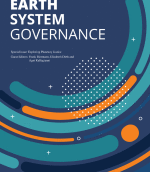A revised version of this working paper has been published as:
Rindefjäll, Teresia., Emma Lund and Johannes Stripple. 2011. Wine, fruit, and emission reductions: the CDM as development strategy in Chile. International Environmental Agreements: Politics, Law and Economics, 11 (1): 7-22. Special Issue on “Agency in Earth System Governance”. 2011.
Through the Clean Development Mechanism (CDM) of the Kyoto Protocol, a developed country actor with a binding emission reduction target can use emission reductions from a project implemented in a developing country to meet this target. At the same time, CDM projects are meant to contribute to sustainable development in the host country, as defined by this country. The CDM is often taken to illustrate a broader contemporary turn in environmental policymaking towards market liberalism, flexibility and pluralism, where the governance of the CDM involves ‘agency beyond the state’ at different political levels and across various jurisdictions. While such an image of the CDM certainly identifies important aspects, it also downplays the ways in which states govern the CDM, not at the international level but at the domestic level through the host country prerogative to define its sustainable development priorities. Early on in the scholarly debate on the CDM, fears were raised about a ‘race to the bottom’ with regard to sustainable development requirements on CDM projects. Our research on Chile confirms that hypothesis, with the important addition, that the ‘race’ is not simply a structural feature of the CDM, but a deliberate strategy. We argue that Chile has actively chosen to put only marginal emphasis on securing the CDM’s contribution to sustainable development, and instead uses the CDM primarily as a tool to attract foreign investments, treating carbon credits as just another export product.
Key words: Clean Development Mechanism (CDM); Chile; Kyoto Protocol; Sustainable Development









